Origins
Wearable devices that adopt PPG (Photoplethysmography) technology for non-invasive heart rate measurement represent a significant milestone in personal healthcare. However, early verification methods, such as gray card testing, could only verify whether the photodetector and LED are functioning but fail to assess performance and the accuracy of the heart rate function.
As wearable devices advanced, we developed the HRS200, which uses green light to simulate PPG signals. Engineers can use its dedicated software to adjust parameters like heart rate (BPM), brightness reflected by different skin tones (DC), arterial blood volume variation (AC), and the perfusion index (PI = (AC/DC) x 100%) for repeated performance testing to verify their design.
Moreover, the HRS200 features a noise simulation function that can superimpose 50Hz or 60Hz electrical noise onto PPG signals, allowing manufacturers to test the noise-handling capabilities of their products. To meet diverse verification needs, the HRS200 also supports playback of raw data, enabling the reproduction of clinical data or user-defined signals for testing interpretation capabilities.
The HRS200 is our first product developed from a performance testing perspective rather than compliance testing. Our AC/DC-based PPG testing methodology has gained industry recognition, and we were invited by the Federation of China (Shenzhen) Wearable Industry to contribute to the development of their first testing standard for smart wearables based on ECG/PPG technology.
As wearable devices incorporate more functions, such as blood oxygen saturation and blood pressure monitoring, we have expanded our offerings to include products like the AECG100 simulator to address these new testing needs.
Whether it's our original PPG heart rate simulator HRS200 or advanced models, our goal is to provide manufacturers with reliable test equipment that enhances the quality of wearable devices for end users.
Functions
Highlights
Raw Data Playback — Performance Verification Using Real ECG Signals
- Supports playback of ECG databases or clinically recorded waveforms to test the DUT's interpretation capability
- Plays user-defined signals to verify specially designed specifications
Provided SDK for Flexibly Developing Programs as Needed
- Users can develop automated testing software based on their needs to control the testing process, reducing the effort of repetitive setups
| Parameters | Supported Range / Types | Accuracy |
|---|---|---|
| BPM (1) | 30 ~ 300BPM (PC software); 30 ~ 240BPM (Standalone usage) | ±1BPM |
| DC in PC software HRS mode | 1 ~ 20 Level | N/A |
| DC in PC software Fine Tune mode | 100mV ~ 2500mV | ±5mV |
| PI in PC software HRS mode | 0.1% ~ 20% (AC / DC, differs with DC level) | N/A |
| AC in PC software Fine Tune mode | 0.75mV ~ 25mV (BNC measurement is magnified 100 times) | N/A |
| Lumen (2) | 50 ~ 800Lux (5mm from diffusion film) | ±3% |
| Light Wavelength | 525nm | ±10nm |
| PD Sampling Rate (3) | <8 ksps (Normal Mode of software); 30 ksps (High Resolution Mode of software) | ±5μS |
| S/N Ratio | >51dB (with USB isolator) | N/A |
| Power - USB | USB Type-B Plug connector, DC 5V IN | N/A |
| Power - Battery | Type AA battery x 3 | N/A |
| Size (L x W x H) | 6.12cm x 13.5cm x 7.6cm | N/A |
| Temperature | 10 °C ~ 40 °C | N/A |
Note:
(1) Heart rate test range is different in standalone mode and PC mode. In PC software mode, heart rate range is from 30 to 300BPM; in standalone mode, heart rate value can be set to 30, 60, 70, 80, 90, 120, 150, 180, 210, 240BPM, plus users can manually select other 3 values from 30 to 300BPM as preset parameters.
(2) Lumen accuracy would be ±10Lux when the light source is lower than 400Lux.
(3) We suggest users to observe PD's analog signals via connecting HRS200's BNC port to an oscilloscope. Under High Resolution Mode, users need to check “LED Off” option to switch off HRS200's LED and no optical signals will be sent then.
HRS200 Test System
| Part No. | Description | Quantity |
|---|---|---|
| 100-HR00001 | Model No.: HRS200 Advanced PPG heart rate simulator for healthcare wearable. Supports fine tune / play raw data / command line test modes. | 1 |
Optional Accessory
| Part No. | Description | Quantity |
|---|---|---|
| 100-OT00001 | USB isolator for reducing the power noise from PC. Recommended to use with SECG 4.0, MECG 2.0, HRS200, HRS100+, SEEG 100 and SEEG 100E. | 1 |
Optional Software Add-on Pack
| Part No. | Description |
|---|---|
| HC0-HR00001 | Playback capability of 40 clinical-recorded PPG databases. 25 PPG records are with arrhythmia symptoms as AF, APC, VPC and 1st AV block. |
Optional Calibration Service and Warranty Extension
| Part No. | Description |
|---|---|
| YY0007 | Model No.: C3 Provides (3) years of calibration service coverage. WhaleTeq equipment can be calibrated to original performance on the basis of (1) year interval. |
| YY0008 | Model No.: R3 Extends the limited warranty from (1) year to (3) years. |
 Software
Software Datasheet
Datasheet User Manual
User Manual





 Adjustable BPM, DC, AC, and PI Values
Adjustable BPM, DC, AC, and PI Values Electrical Noise Simulation
Electrical Noise Simulation LED Brightness and Frequency Detection
LED Brightness and Frequency Detection Raw Data Playback
Raw Data Playback Command Mode
Command Mode Built-in 40 Clinically Recorded Waveforms
Built-in 40 Clinically Recorded Waveforms
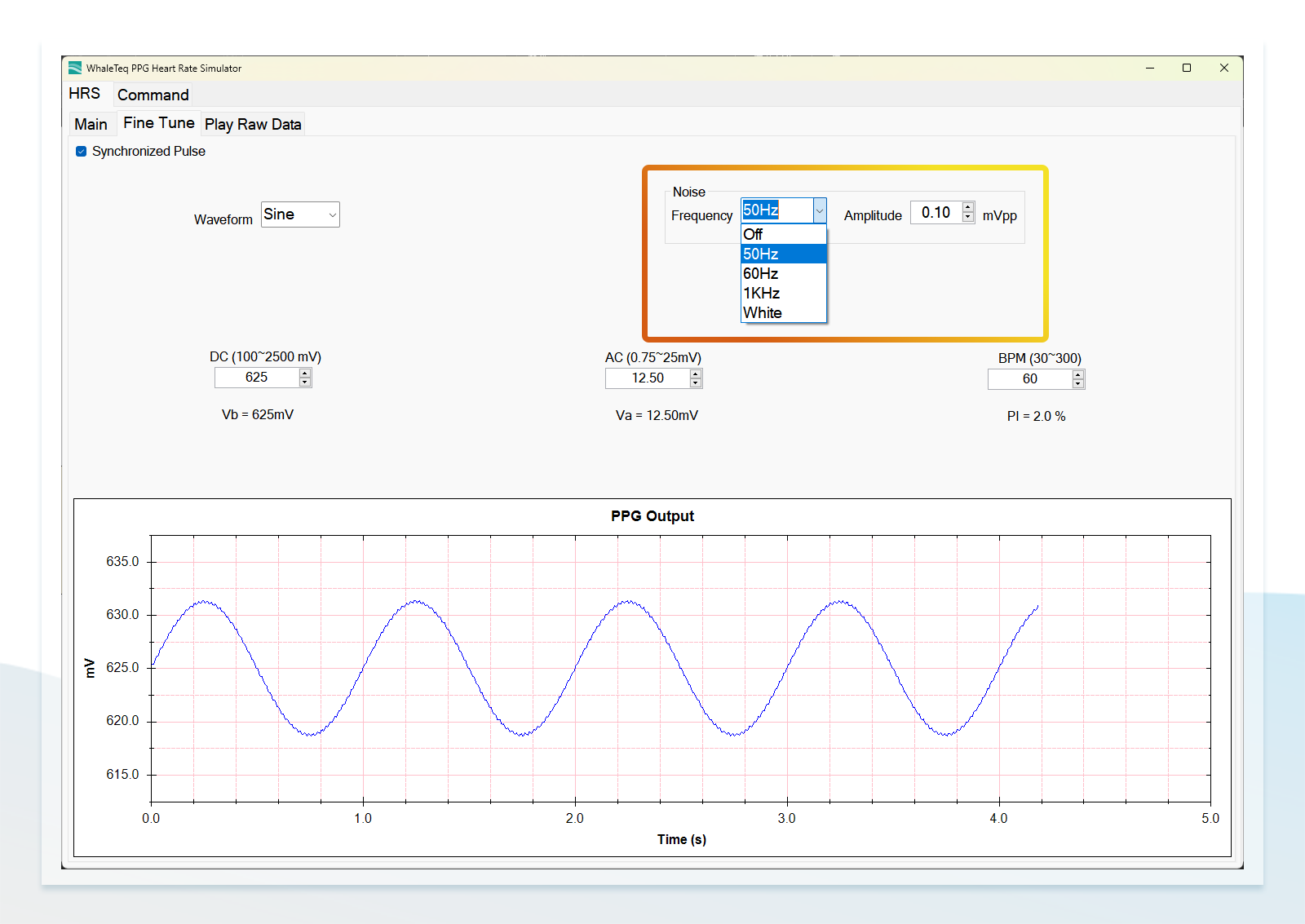
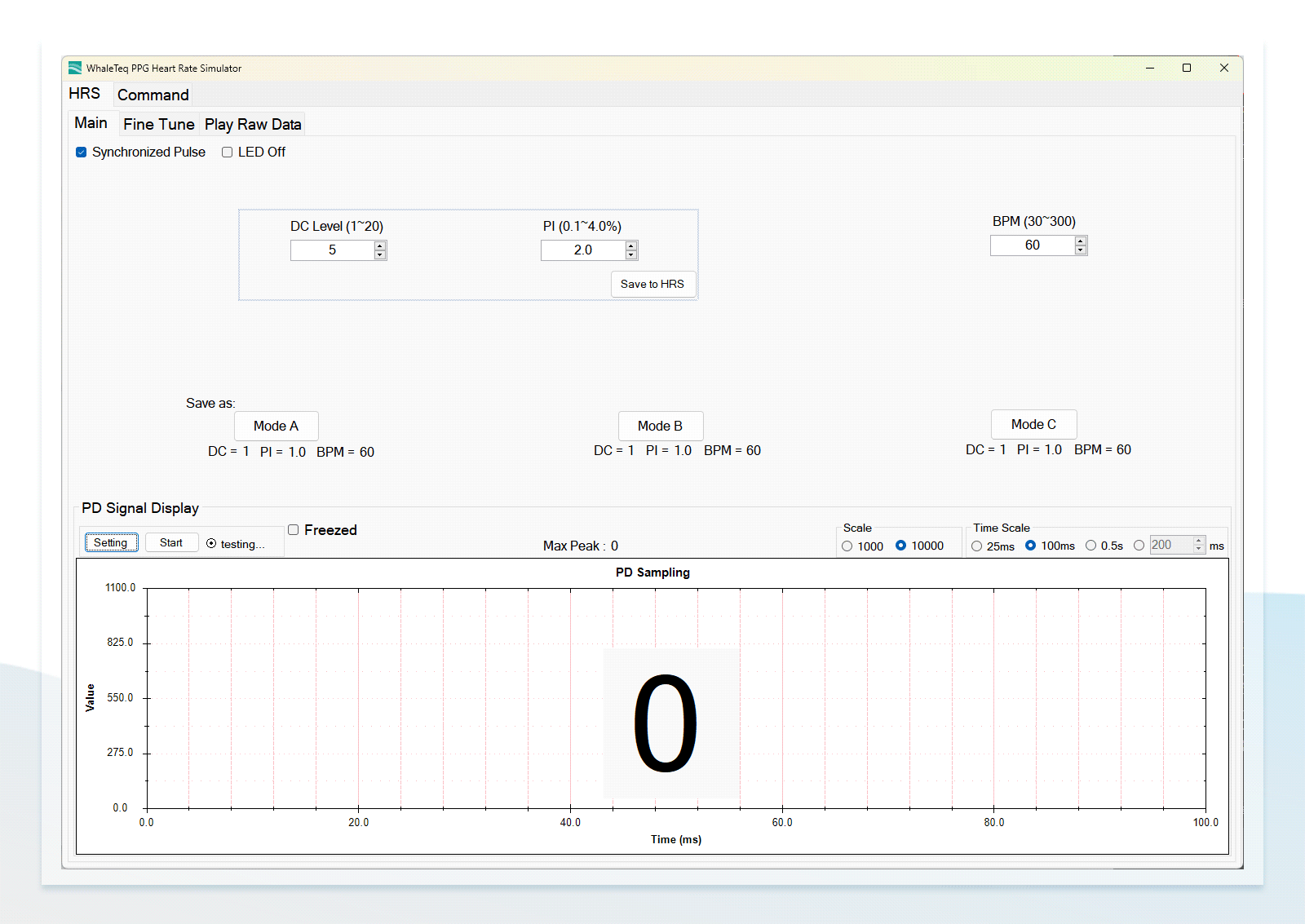

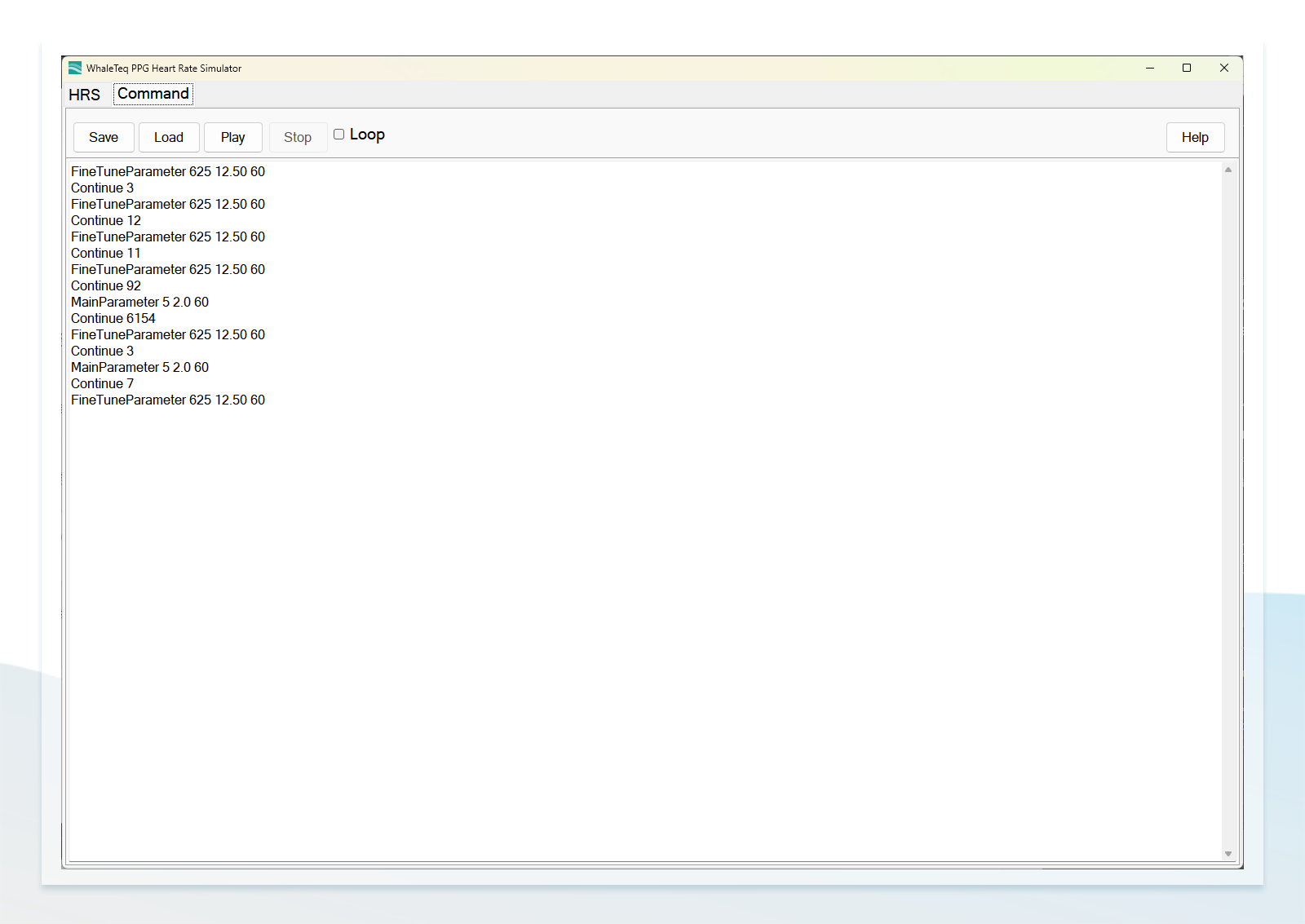
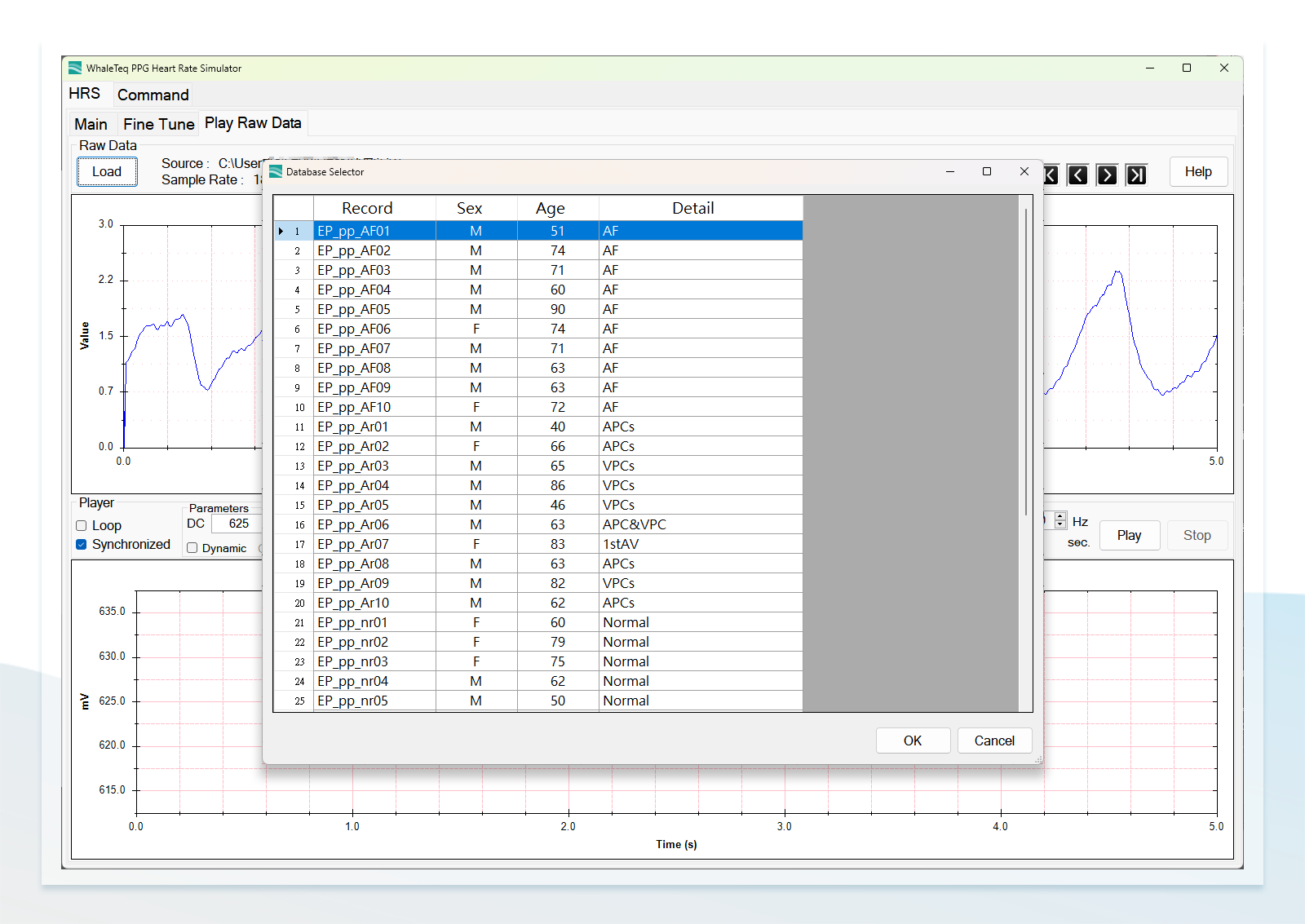
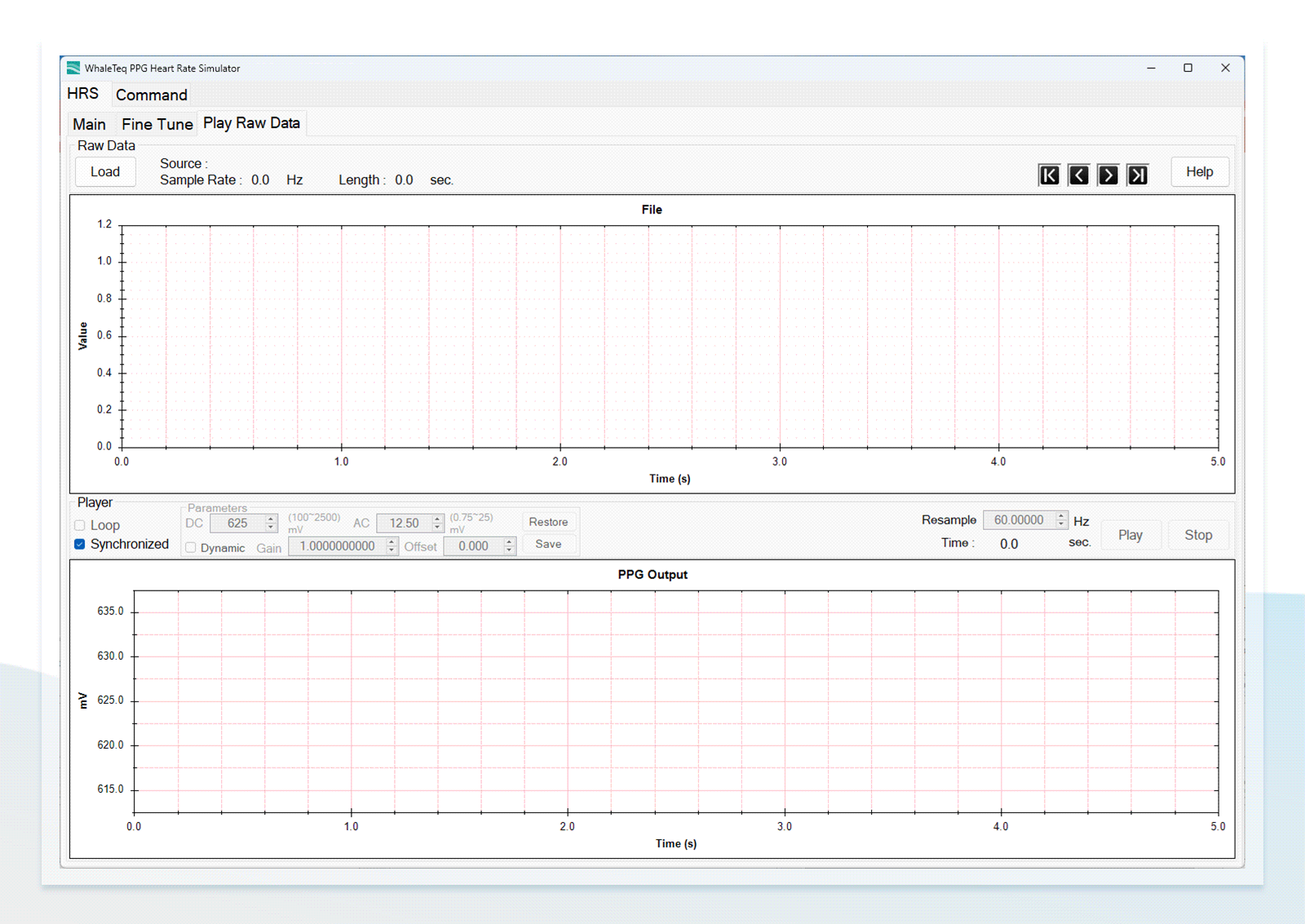
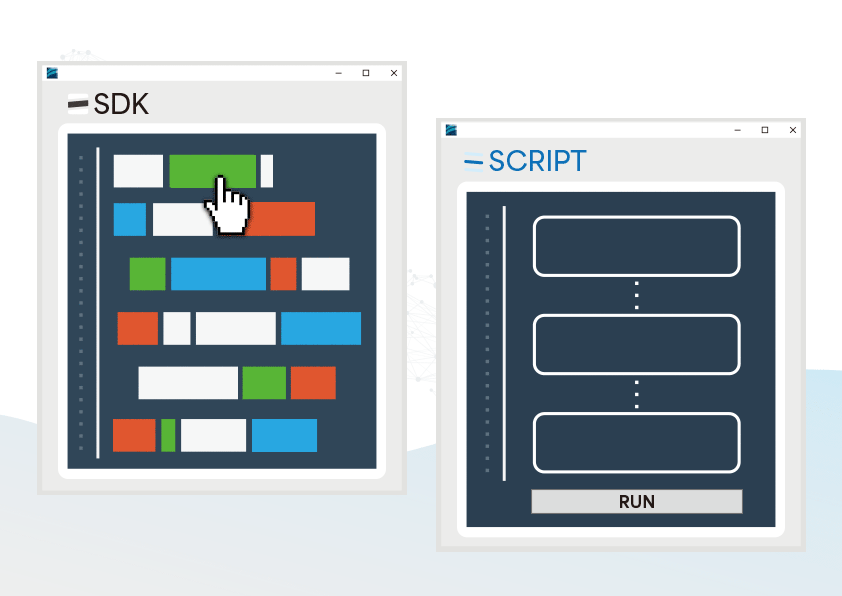




 SDK
SDK